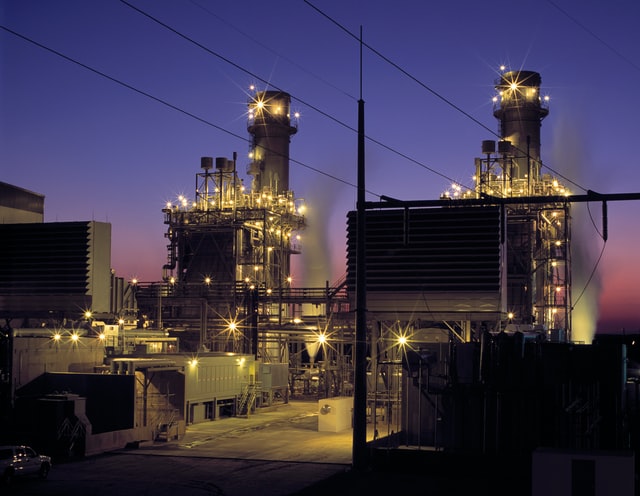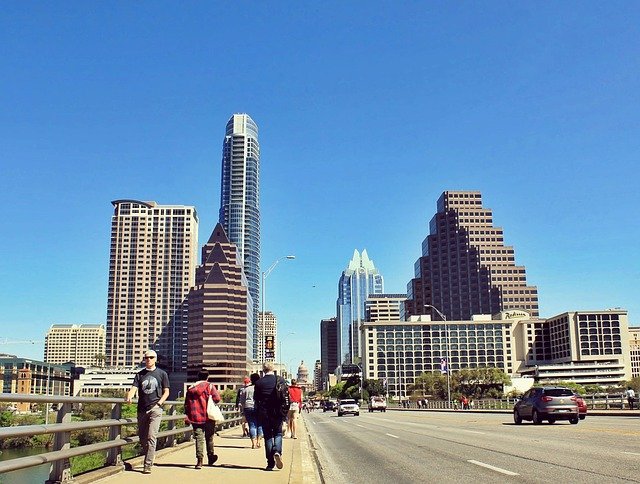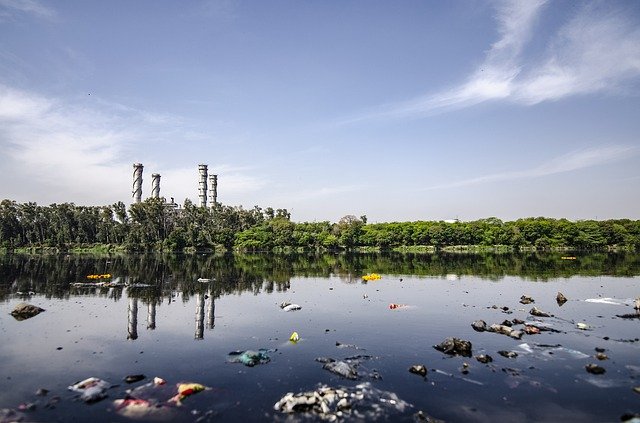Water
California, among many other places, is now in the grips of scarily intense drought. Yet, California still uses an awful lot of water. Golf courses and car-washes are obvious wasters, but agriculture is the thing that really sucks California dry.
California as a whole diverts or pumps 43 million acre-feet of water each year to supplement its meager rainfall. In total, agriculture consumes 34 million acre-feet of that.

The economics of this can get a little bizarre. Water in California is heavily subsidized — a big reason why so many water-intensive crops are grown there. Fruit and nut trees need more water, but they also bring in much more revenue per acre than vegetables or other crops — and, they represent a long-term investment. That means that if water is scarce, farmers will tend to use it on just those crops that are using it least efficiently. For example, almonds in California use a stunning 1.1 trillion gallons of water each year, enough for every person in the state to take a luxurious 22-minute shower every day. California produced 82% of the world’s almond crop in 2013.
Increasing the efficiency of irrigation is something that people have long known how to do. According to Big Picture Agriculture, “Many of the methods known to conserve water and use it efficiently have been practiced for thousands of years in some very arid regions of the world with great success. The best systems require little maintenance while yielding maximum results.” The site goes on to list 35 methods, viable at a range of scales, for conserving irrigation water. Why is it not done, then, in California? Why essentially it’s because farmers are paid to waste water.
Of course, water wastage is compounded when water is wasted on products that are deeply wasteful in themselves. Producing a gallon of ethanol, for example, requires 193 gallons of water (see Food, below, and Energy). The US plans to pare down ethanol production to a mere 15 billion gallons in 2015.

Food
We feel guilty when we forget a container of leftovers in the fridge, it grows fuzz and we have to toss it, and I shudder to think how many tons of the nation’s french fries (not to mention our lettuce!) get tossed into the trash. But to get a handle on the immense amount of nutrients today’s food system wastes, we have to go to the top of the food chain: we have to look at meat.
A lot has been written about all this; Fast Food Nation by Eric Schlosser, for example, lays it out in gruesome detail. But for introduction, a well-documented New York Times article from January, 2008 does the job nicely. Here are some of the facts it presents:
- The world’s total meat supply was 71 million tons in 1961. By 2013 it rose to 308 million tons.
- 2.2 pounds of beef is responsible for the equivalent amount of carbon dioxide emitted by the average European car every 155 miles.
- Though some 800 million people on the planet now suffer from hunger or malnutrition, the majority of corn and soy grown in the world feeds cattle, pigs and chickens.
- About ten times more grain is required to produce the same amount of calories through grain-fed beef as through direct grain consumption.
- Iowa alone produces 137,000 tons of pig excrement every day.
- The price of beef and chicken has declined in real terms over the past thirty years.
There can be no doubt that a system that subsidizes meat, by subsidizing grain, is detrimental both to the planet and to the health of all those meat-eaters. To put it bluntly: it’s a waste of a heck of a lot of good food.
And it goes beyond mere eating! We’ve already mentioned the global poster child for insanely wasteful resource use: ethanol. A third of the US corn crop is used to produce the stuff. The world’s #3 producer of corn is Brazil (China is #2), but Brazil produces only a third of the amount of corn that US drivers burn in their cars.
Energy
There are so many ways to talk about our society’s waste of energy. We could discuss the sheer wattage of solar radiation that hits the earth each day, and the falling price of photovoltaics, or the untapped potential of wind and tidal power sources, or the astounding savings that could be found in ramping up public transportation, and using energy-efficient vehicles. A 2009 cover story in Scientific American showed how the entire world could get all of its energy — for transportation as well as electricity — from wind, water and solar sources by 2030, using tweaks to existing technology.

Of course, we can’t discuss the waste of good energy resources without mentioning the squandering of both human and material resources in wars, and preparation for wars, over the control of fossil fuel resources. Our immense military establishment is, of course inherently wasteful — because military assets are designed to be consumed in the task of destruction. Not only that, military operations themselves use staggering amounts of energy. Here are some astounding examples:
- The US military consumes more energy than Nigeria.
- In 2006 alone, the Air Force consumed the same amount of fuel US airplanes consumed during WWII (between December 1941 and August 1945): 2.6 billion gallons.
- F-15 fighter jets burn 1,580 gallons of fuel per hour.
- Over 70 percent of the tonnage required to position today’s US Army into battle is fuel.
Why do we squander our energy resources so outrageously, when we know darned good and well that continuing to burn fossil fuels will bring disastrous, irreversible consequences? It’s because the alternatives are, basically, unthinkable. I’m not saying our energy alternatives are unworkable, impracticable or even present too hard an adjustment. The problem is that in terms of our political economy, our international relations, our sense of who’s on top and in control, they’re unthinkable. Imagine! They’re saying we need international cooperation to protect the global climate. Up to now, international relations has always been about self-interest: individual and corporate, mostly, though occasionaly people pull together for the sake of national self-interest. But to deal with climate change, we must appeal to global self-interest. That’s still self-interest, mind you, but it’s a whole new thing.
By 1600 the British Isles were pretty much cleared of timber, save the inviolate estates of nobles. One of the pressing concerns that led to the earliest North American settlements was the prodigious supply of wood to be found there. Wood was the first cargo that the failed Virginia settlement of 1608 tried to send back. The pattern was repeated in the United States. Prior to the civil war, wood provided over 90% of fuel for homes and industries in the US. The coal was there — it was already being used very extensively in Britain — but the States had a very well-developed and influential timber industry. The bottom line is that we persistently wasted wood in the United States until we truly had no other alternative.

The Vote
We US citizens are justifiably proud of our democratic, constitutional political system — yet one wonders why we make so little use of it. I live in the little town of Jackson, Maine, pop. 548 in the 2010 census. People in Maine are proud of their democratic traditions and protective of their suffrage; recently Maine resoundingly defeated a ballot issue to do away with same-day registration, and we’re one of only 14 states that allows convicted felons to vote. But — our most recent election was an off year: no national, state or even local offices to be decided; it turned out that the only thing on the ballot was the school district’s budget. Now, the school budget is an issue about which a lot of people in our little town have loud complaints and strong opinions. I went in to vote at about four in the afternoon. “Slow day?” I asked the dutiful poll-watcher lady. She sighed and consulted her clipboard. “You’re number six.”
The average voter turnout in the United States in the 28 national elections since 1945, in terms of the portion of the voting-age population, is 47.7%. That’s 138th in the world. The top ten in voter turnout are emerging democracies that had only had a few elections during that period. But Australia has had 22 elections since 1945; their turnout rate has averaged 84.2%.
It could be that we’re jaded about voting because there seems to be so little to vote for; American politics is mired in partisan gridlock and big-money influence. The current US Congress has single-digit approval ratings, but guess what! Because of the magic of gerrymandering, the number of incumbent congresspersons who will lose their bids for reelection will most likely be in the single digits! Thus, the most expensive election in world history (under current rules, every US election will almost certainly cost more than the previous one) will yield the absolute minimum amount of actual legislative or policy change.
There are commonsense reasons why citizens really ought to use their voting power. The most basic one is that when fewer people vote, the groups who are more likely to vote gain more power over the overall outcome. This basic fact is powerfully used by politicians and their strategists. The 2000 presidential election in the US was very close; much was made over a few thousand contested votes in Florida, and the 2.7% of the popular vote that Ralph Nader managed to get. Nevertheless, George W. Bush was “elected” by 47.9% of the popular vote, which amounted to 27.4% of the voting-age population. Think voting matters?
Infrastructure
In 1904, New Yorkers thought their brand-new subway system was the swellest thing ever. And it was! It expanded rapidly, growing into world’s largest railway system, efficiently moving millions upon millions of people to work, to play at Coney Island, to cheer at Yankee Stadium. The New York subway stuck to its five cent fare until 1948. By that time, of course, there were lots of automobiles in the city; in 1904 there were only horses.

The city of Austin, Texas is known as the state’s least scary city to non-Texans. It had the U. of Texas Longhorns, nice museums and music scene, interesting historical spots — all in all, a nice place to visit. But it’s rough on unfamiliar drivers. It’s encircled by ring upon ring of elevated, limited-access highways with endlessly sweeping ramps; it can literally take you twenty minutes to reach a destination that is visible from where you’re standing. “You think this is bad,” say Austin people, “Wait till you see Houston.”
People in Austin wonder whether its already Texas-sized highway system will be able handle the traffic load in a few years. Things get pretty backed-up during rush hours — and, all those new flyways will need to be maintained. That’s not a trivial issue. I have been traveling in and out of New York City on I-95 for many years, and I don’t recall ever not seeing construction on the stretch between New Haven, Connecticut and the New York State line. That means that at existing levels of traffic, using existing road-maintenance techniques, this stretch of highway simply cannot be fixed before it wears out.
There are a zillion examples of mind-bendingly egregious waste of the public infrastructure that your tax dollars have bought. I’ll just make one more observation before moving on. Infrastructure capacity is the most important consideration in how cities arrange zoning requirements. If zoning allows, say, twelve-story buildings with a certain footprint in a neighborhood, you can bet that the city figures it has sufficient water, transportation, education and public-safety facilities to handle buildings of that size. Would you care to hazard a guess at how much of the zoned-for, buildable space in New York City is actually built, as of this year? Fifty-one percent. Other major cities are even less densely built. Our cities could hold a whole lot more people than they do, and these people could significantly lower their environmental footprint by moving into cities — and even more so if cities embraced green building techniques. Yet we keep pumping out the parking lots, the beltways, the big-box superstores…
Borrowed Money
There is, by many accounts, a debt crisis in modern society. The national debt of the United States stands at about $17 trillion, or some $55.9K per citizen, which is a bit more than the US’s personal debt per citizen, which stands at $52.2K. The US Debt Clock website shows many interesting facts; its numbers adjust in real time, which lets us see that our national deficit is currently decreasing by about two thousand dollars per second. Also, US debt held by foreign countries, which stands at around $5.9 trillion, is currently decreasing by some $4K per second. So the trend lines seem to be positive — but any way you slice it, it’s still a lot of money to be owing.
As wages and household incomes have declined, people have taken on more and more personal debt. As of 2012, the average US household with at least one credit card owed $15.9K in credit card debt, much of it at high-teens interest rates. But, of course, not every family can get a credit card. Payday and car-title lenders lie in wait for the vulnerable. Some states, such as Texas, do not place any limits on the rates such lenders can charge.

But, you might ask, why is “borrowed money” placed in the category of things that are wasted? Well, it’s wasted, by definition, if new loans are taken out just to pay back old ones. Consumers who do this often find themselves in a spiral of debt, leading to bankruptcy, and permanent economic hardship. “Deficit Hawks” warn that our nation faces this predicament too. There are significant differences between the finances of a nation and those of a family: the nation can, within limits, print its own money. However, money can’t just be inflated or borrowed forever without consequences.
Not everyone borrows out of desperation; businesses often borrow money because they can make more profitable use of the cash they have on hand. Nations, similarly, can choose to borrow during economic downturns, times when raising taxes would further depress the economy. Such borrowing can be seen as sensible and sustainable.
However, if one is borrowing more than one would prefer to borrow, then one will most likely not be borrowing on the most advantageous terms. Problem borrowing comes when one just doesn’t have enough income to pay the bills. That’s the borrowed money that gets wasted, and its amount increases when the economy turns downward, and when there are more poor people.

Human Potential
And yet, modern society perpetrates one waste that is bigger — much bigger — than all of these.
Regarding this last, biggest and most important of all the things our society squanders, I can’t imagine saying it better than Henry George did in Progress and Poverty:
[The] greatest of all the enormous wastes which the present constitution of society involves is that of mental power. How infinitesimal are the forces that concur to the advance of civilization, as compared to the forces that lie latent! How few are the thinkers, the discoverers, the inventors, the organizers, as compared with the great mass of the people! Yet such men are born in plenty; it is the conditions that permit so few to develop…. Turn to the lives of great men, and see how easily they might never have been heard of. Had Caesar come of a proletarian family; had Napoleon entered the world a few years earlier; had Columbus gone into the Church instead of going to sea; had Shakespeare been apprenticed to a cobbler or chimney sweep; had Sir Isaac Newton been assigned by fate the education and the toil of an agricultural laborer… what would their talents have availed? But there would have been, it will be said, other Caesars or Napoleons, Columbuses or Shakespeares…. This is true. And it shows bow prolific is our human nature. As the common worker is on need transformed into queen bee, so, when circumstances favor his development, what might otherwise pass for a common man rises into a hero or leader, discoverer or teacher, sage or saint. So widely has the sower scattered the seed, so strong is the germinative force that bids it bud and blossom. But, alas, for the stony ground, and the birds and the tares! For one who attains his full stature, how many are stunted and deformed.



